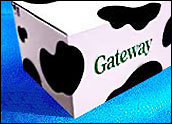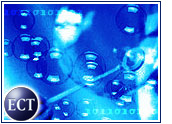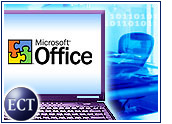
The squeeze is on, as unstoppable forces meet immovable objects. On onehand, enterprise storage needs are increasing exponentially year after year.On the other hand, IT costs are controlled more fiercely than ever, often bynon-IT executives. A Gartner report predicts 2003 will be the third consecutive year in which companies will remain cautious buyers, opting to wring usefulness from aging equipment rather than invest in new technology.
In this stingy environment, such vendors as EMC, Network Appliance and IBM, among others, are attempting to convince corporations to buy entirely new networks dedicated to data storage. However, the clear-cut logical advantages of these networks must be balanced against their hefty cost.
Can innovative equipment vendors persuade cautious enterprise managers tobuild out crucial but costly network architecture? More importantly, what isthe best type of storage solution from a budgetary and technical viewpoint?
Changing Market
Several different kinds of separate storage solutions currently are on the market, including storage area networks (SANs), network-attached storage (NAS) and content-attached storage (CAS). IT managers must understand how to choose between these different technologies, because the data storage industry is changing rapidly.
In an effort to improve data availability, data retrieval and data protection, vendors have released larger and more sophisticated solutions in recent months. The most fundamental development is the separation of file-storage into its own network. This innovation carries important practical benefits:
Desire and Need
Enterprise equipment purchasers might waffle on the question of whethersegregation of storage is necessary or is merely an expensive wish-list item onthe balance sheet. But among analysts, who admittedly do not have to justifyexpenditures, the answer is clear-cut.
David Hill, vice president of storage research at Aberdeen Group, takesa firm stand in the former camp. Citing smoother moving and processing ofdata, he told the E-Commerce Times that “storage must become a separate entity.”
Giga Information Group senior analyst Anders Lofgren could hardly state the case emphatically enough, especially for large enterprises. “We recommend, if they have not implemented network storage, they should definitely do so. Obviously, early on, there will perhaps be additional costs: You have to buy a bunch of switches, and there’s a learning curve.” But Lofgren noted that once an enterprise consolidates storage in a network architecture, it will benefit from economies of scale as the information archive grows.
Meanwhile, Brad Nisbet, senior research analyst at IDC, observed that reducedadministration costs can be another benefit of SAN deployment. “With a SAN, youcan theoretically grow your storage capacity without growing your staff. Itcomes down to looking at the broader picture,” he told the E-Commerce Times.
Virtual or Real?
For those companies that are reluctant to shell out capital for an entirely new network setup, software virtualization can be a cheaper alternative to building a physicalstorage network. By creating a virtual network that pools storage resources across multiple servers, administrators can optimize and better navigate their storage topography without making a heavy investment in hardware.
But Giga’s Lofgren told the E-Commerce Times that virtualization is not an important part of the future. Although smaller vendors are playing in the virtualization market, larger vendors have not stepped in yet. Furthermore, according to Lofgren,distorted use of the term to define a variety of products has stripped the word of meaning and undermined its marketing legitimacy. “Vendors are backing away from it,” he said.
On the other hand, Laura Koetzle, an infrastructure analyst with Forrester Research, maintains a more sanguine attitude toward virtualization of traditional storage, asserting that a virtual view of storage within a larger network can be just as useful as a discrete physical network dedicated to storage when it comes to allocating unused disk space.
Bottom Line
Indeed, while it is all well and good to say that corporations should buy networked storage solutions, the harsh reality in today’s IT climate is that companies’ choices may depend as much on cost as on technical specifications. Therefore, it is likely that many enterprises will choose their storage solutions based on short-term necessity, rather than long-term structural planning.
Koetzle suggested that IT buyers ask themselves, “Is the application that I’m building really one that requires a discrete storage network?”
If a majority of buyers answer “no” to that question, network vendors will get hungrier, and further consolidation can be expected in the storage market. If they answer “yes,” the market will grow more quickly. Either way, SAN technology is not going away. As IT spending recovers, it will become a must-have for more and more enterprises. The only question is, which companies will be ahead of the curve?















































Social Media
See all Social Media